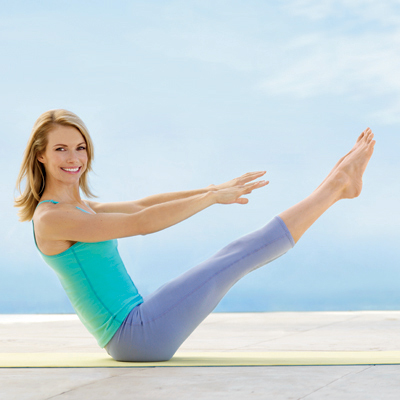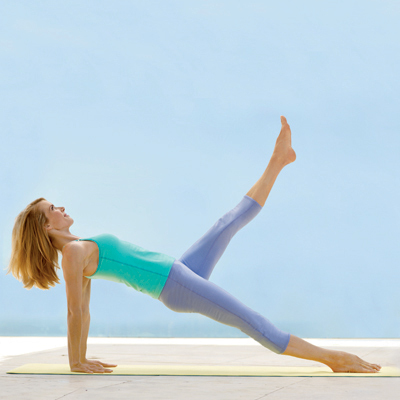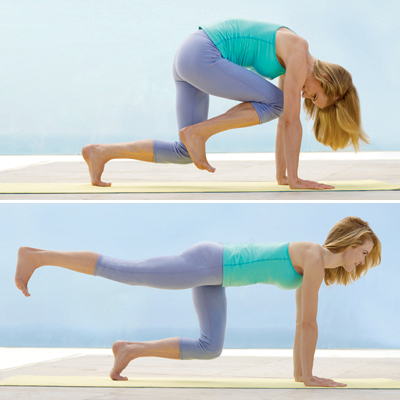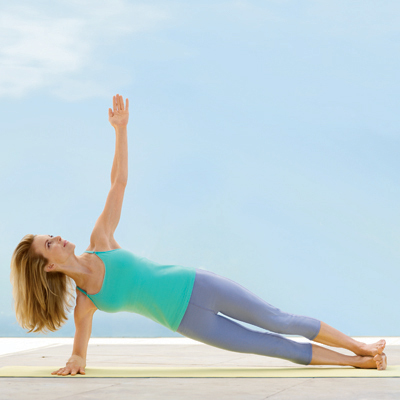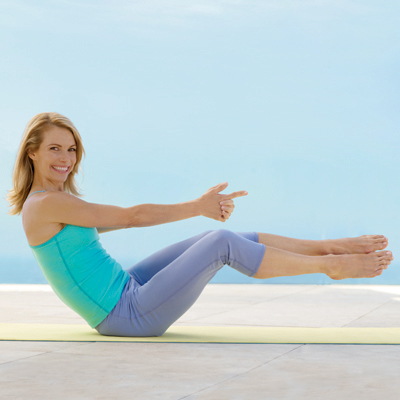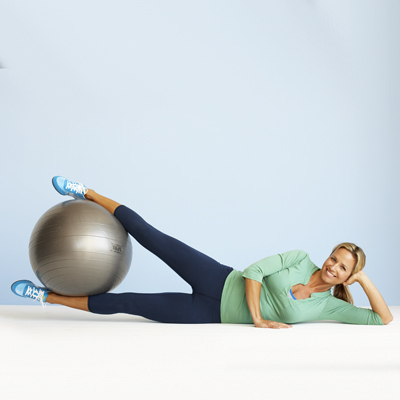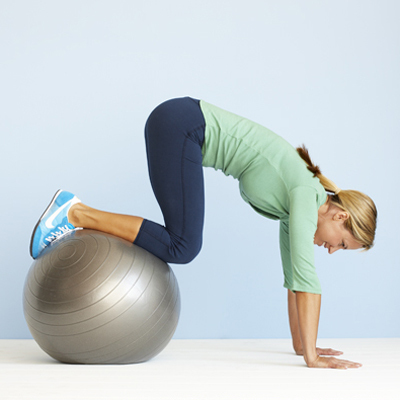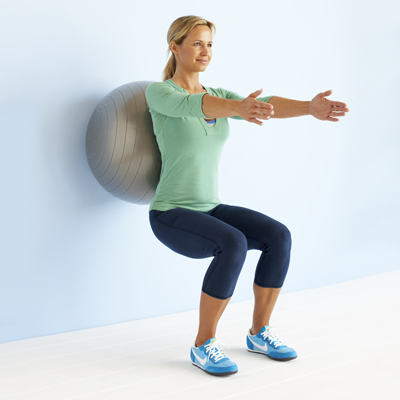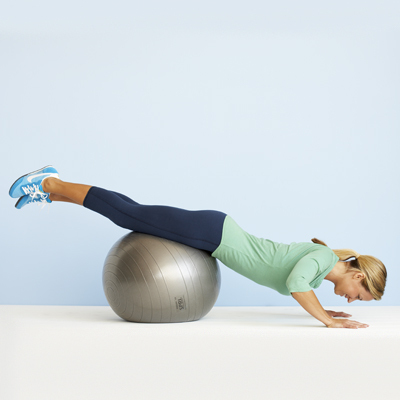One person's ideal body weight may be completely different from another's. If you compare yourself to family and friends you risk either aiming too high if you are surrounded by obese or overweight people, or too low if everyone around you works as fashion models.
Even comparing yourself with people outside your immediate surroundings may not work.
The levels of overweight and obesity in one country, such as the USA or UK, are much higher than in The Netherlands. So a Dutch person may aim for a lower ideal weight than an American if all he did was to compare himself to other people.
Is Body Mass Index (BMI) a good measure?
Your BMI is your weight in relation to your height.- BMI metric units: Your weight (kilograms) divided by the square of your height (meters)
e.g. Weight 80 kilograms. Height 1.8 meters.
1.82 meters = 3.24
80 divided by 3.24 = BMI 24.69. - Imperial units: Your weight (pounds) times 703, divided by the square of your height in inches.
e.g. Weight 190 pounds. Height 6 ft (72 inches)
722 = 5184
190 x 703 divided by 5184 = BMI 25.76
- People with a BMI of less than 18.5 are underweight.
- A BMI of between 18.5 and 25 is ideal.
- Somebody with a BMI between 25 and 30 is classed as overweight.
- A person with a BMI over 30 is obese.

What is the problem with BMI?
BMI is a very simple measurement which does not take into account the person's waist, chest or hip measurements. An Olympic 100 meters sprint champion may have a BMI higher than a couch potato of the same height. The couch potato may have a big belly, not much muscle and a lot of body fat on his hips, upper thighs, in his blood and other parts of his body. While the athlete will have a smaller waist, much less body fat, and most likely enjoy better health. According to a purely BMI criteria, the couch potato is healthier.
BMI does not take into account bone density (bone mass). A person with severe osteoporosis (very low bone density) may have a lower BMI than somebody else of the same height who is healthy, but the person with osteoporosis will have a larger waist, more body fat and weak bones.
Many experts criticize BMI as not generally useful in evaluation of health. It is at best a rough ballpark basic standard that may indicate population variations, but should not be used for individuals in health care.
Put simply: experts say that BMI underestimates the amount of body fat in overweight/obese people and overestimates it in lean or muscular people.
What is Waist-hip ratio (WHR)
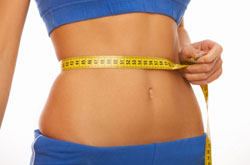
If a woman's waist is 28 inches and her hips are 36 inches, her WHR is 28 divided by 36 = 0.77. Below is a breakdown of WHR linked to risk of cardiovascular health problems.
Male WHR
- Less than 0.9 - low risk of cardiovascular health problems
- 0.9 to 0.99 - moderate risk of cardiovascular health problems
- 1 or over - high risk of cardiovascular problems
- Less than 0.8 - low risk of cardiovascular health problems
- 0.8 to 0.89 - moderate risk of cardiovascular health problems
- 0.9 or over - high risk of cardiovascular problems
A woman with a WHR of less than 0.8 is generally healthier and more fertile than females with higher WHRs. They are less likely to develop diabetes, most cancers, or cardiovascular disorders. Similarly, men with a WHR no more than 9 are generally healthier and more fertile than men with higher WHRs, and less likely to develop serious conditions or diseases.
Studies indicate that if WHR were to replace BMI as a predictor of heart attack worldwide, figures would include many more people.
What is the problem with WHR?
WHR does not accurately measure a person's total body fat percentage, or their muscle-to-fat ratio. However, it is a better predictor of ideal weight and health risks than BMI.
What is Body Fat Percentage?
Your body fat percentage is the weight of your fat divided by your total weight. The result indicates your essential fat as well as storage fat.- Essential fat - this is the amount of fat we need to survive. Women require a higher percentage than men. Essential fat is 2%-5% in men, and 10%-13% in women.
- Storage fat - this consists of fat accumulation in adipose tissue, some of which protects our internal organs in the chest and abdomen.
- Total body fat percentage - this is essential fat plus storage fat.
Essential fat
- Women 10-12%
- Men 2-4%
- Athletes
- Men 6-13%
- Women 14-20%
- Non-athletes classed as fit
- Men 14-17%%
- Women 21-24
- Acceptable
- Men 18-25%
- Women 25-31%
- Overweight
- Men 26-37%
- Women 32-41%
- Obese
- Men 38% or more
- Women 42% or more
Body fat percentage would not make the couch potato seem fitter than the 100 meter Olympic champion - as was the case with BMI.
There are various ways of calculating a person's body fat percentage. None of them can give a 100% accurate figure, but the estimates are accepted as fairly close. Examples include near-infrared interactance, dual energy X-ray absorptiometry, and bioelectrical impedance analysis.
Many gyms and doctor's practices have devices that can tell you what your body fat percentage is.
Conclusion
This article has briefly explained three ways to help you find out whether your weight is ideal, and what your target should be if it is not. You can work out your BMI, WHR, or Body Fat Percentage.BMI and WHR can be done easily in your home. WHR is more accurate than BMI. However, BMI is a useful indicator if you are an "average" person - not an Olympic athlete or a dedicated weight trainer.
If you embark on a weight loss regime that includes exercise and diet, bear in mind that the exercise will probably increase your muscle mass, which may increase your weight, even though your waist may shrink. Muscle weighs more than fat.
It might be better to aim for target waist, hips and chest measurements. A Waist-hip ratio goal is also possible. If you feel really dedicated, check your Body Fat Percentage; if you are not happy with the reading, discuss a realistic target with a nutritionist, sports scientist, or personal trainer and go for it!
Written by Christian Nordqvist
Article date: 23 May 2010
Copyright: Medical News Today
Not to be reproduced without permission of Medical News Today
 There
are many ideas, and opinions, on what constitutes good health,
or what a meaningfully healthy lifestyle feels like or looks
like. It could be said that health should be a natural
condition, or at least a consistent state of well being. But
what is this natural condition? There are some people who accept
pain and discomfort in the body as a necessary part of living.
This pain is considered to be a motivator, something for the
body to fight against. They accept this condition because they
observe that there are so many people with health complaints and
so few people free of problems. It is even taken for granted
today that dying of a degenerative disease is acceptable if the
person had led a 'good life'.
There
are many ideas, and opinions, on what constitutes good health,
or what a meaningfully healthy lifestyle feels like or looks
like. It could be said that health should be a natural
condition, or at least a consistent state of well being. But
what is this natural condition? There are some people who accept
pain and discomfort in the body as a necessary part of living.
This pain is considered to be a motivator, something for the
body to fight against. They accept this condition because they
observe that there are so many people with health complaints and
so few people free of problems. It is even taken for granted
today that dying of a degenerative disease is acceptable if the
person had led a 'good life'.

